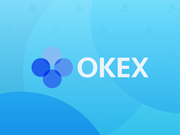Blockchain (Part 2)
7 minutes
Beginner
This is the second part of our article about Blockchain. In this part, we will briefly talk about the purposes of the use of blockchain and its advantages and disadvantages. If you haven't read our first part where we briefly explain how blockchain technology works, the link to the first part is here. We advise you to read it.
What is blockchain used for?
Blockchain is often associated with cryptocurrency and NFTs, but its numerous applications go far beyond that. It has already made a noticeable impact on several sectors of the economy thanks to its new use for solving issues of transparency and cost of data processing. In the end, blockchain can store any kind of data, not just financial records.
Cryptocurrency
Digital currency is the most well-known application of blockchain. Cryptocurrency has undergone a significant shift into the mainstream over the past couple of years. Popular cryptocurrencies such as Bitcoin, Ethereum, and Litecoin are no longer niche products: Venmo users can buy Bitcoin and three other coins in the app, companies such as Visa and Paypal have included cryptocurrency in their payment infrastructure, and many financial advisors now consider these digital assets as serious, although high-risk, investments.
Each cryptocurrency has its own unique blockchain, in which transactions are grouped into blocks and then linked together. For example, the Bitcoin blockchain and the Ethereum blockchain do not interact. The cryptographic nature of blockchain networks minimizes the risk of compromising your financial information or personal data, allowing for more secure and anonymous transactions.
Non-interchangeable token (NFT)
Non-fungible tokens, or NFTs, are likely the second most popular application of blockchain after cryptocurrencies. NFTs are digital objects such as music, art, collectible cards, GIF files, and videos that are unique and cannot be exchanged for other tokens. Unlike cryptocurrencies, NFTs have their ownership rights sold on the blockchain; owning an NFT means you have a digital certificate of authenticity for that specific token.
NFTs are created or "minted" on various blockchains, including Ethereum, Cardano, Solana, Flow, and others. The blocks for tokens on these networks store information related to the digital file, transaction amount, date, sender, and recipient. Supporters of anti-piracy efforts hope that NFTs will help artists fight against illegal reproduction of their works and infringement of copyright by tokenizing their works. Because NFTs function as proof of creation and ownership, they can also create additional revenue streams for artists through honorariums for all subsequent token sales.
NFT is a new and more convenient form of transferring ownership rights!
Smart contracts
Smart contracts are algorithms written in a blockchain that follow simple "if/when... then..." operators. The program triggers when a specified condition is met, automatically executing the next action written in the code.
Smart contracts can be configured to perform various actions, such as releasing funds, sending notifications, issuing a support ticket, or registering an item. To set the conditions of the contract, network participants determine how the data will be represented in the blockchain, agree on the conditions, and develop a dispute resolution system.
Smart contracts are used by enterprises to automate pre-established processes, reducing operational expenses. In addition, limiting human interaction with company data also reduces the likelihood of their loss, sale, or theft. Smart contracts are used in several key industries, including healthcare, real estate, and finance.
Healthcare
The healthcare sector has been moving away from paper documentation for many years and the adoption of blockchain technology is another step in this direction. Blockchain helps reduce healthcare costs by improving access to information and optimizing processes. Protecting patient records is probably the most tangible application of blockchain in healthcare. Today, a large part of patient data is stored in disparate databases, which means your specialists may not have access to the same data as your treating physician and vice versa.
Blockchain technology can help solve this problem by connecting medical records systems from various providers to a single network. Patients will have a key to their data, similar to how traders can store a private key for their cryptocurrency wallet. They will then need to grant access to these data in the medical network to a medical worker or insurance company. Another application of blockchain technology in healthcare is tracking prescription drugs. Using blockchain technology will allow pharmaceutical companies to track their products by serial numbers or batch numbers and combat the problem of counterfeit drugs.
Banks and financial institutions
Blockchain technology has possibly had the greatest impact on the financial sector. Its potential applications are numerous and can affect various services, including asset management, insurance, payments, settlements, and compliance. One example of this is crypto-credit cards formed as a result of partnerships with popular card networks like Visa and Mastercard.
The simplest use of blockchain in finance is to accelerate the transfer of funds between parties. This is especially convenient for cross-border transactions that otherwise may require passing through several banks on the way to the final destination. In the end, blockchain may compete with existing stock trading platforms due to its ability to quickly verify and settle transactions. This technology can reduce the waiting time when selling stocks and help traders access their funds faster.
Advantages and disadvantages of blockchain

Blockchain offers various advantages that organizations, institutions, and businesses should consider. However, this technology has some unique disadvantages that should be taken into account before incorporating blockchain solutions into their work processes.
Advantages
Transparency. All participants in the blockchain network use the same documentation, not separate copies. Because data is transmitted over a wide computer network, blockchain is available to everyone to access, verify, and audit data and transactions.
Traceability. Information in the blockchain is organized chronologically, and each block of data has an alphanumeric code associated with the previous block. This makes it easy to track a specific transaction and trace its source.
Security. Data can only be added to a blockchain. Once a blockchain has been created, it cannot be changed, protecting the information within it. Moreover, the decentralized nature of most blockchains makes them immune to takeover or corruption by a central organization.
Disadvantages
Power consumption. The PoW method of proof-of-work networks is inherently inefficient. Having multiple network users competing to verify the same operations is a huge waste of energy, which has a strikingly negative impact on the environment.
Scalability. As the number of users in a blockchain grows, so does the number of operations. The processing power required for these operations can exceed the workload that hard disks can realistically handle.
The inevitable disadvantage of security. Blockchains are generally more secure than other databases and record-keeping methods, but they have one key drawback. If more than half of the nodes involved in the network create invalid transactions or reject legitimate ones, the rest cannot intervene. This is known as a 51% attack.
The future of blockchain
The invention of the Internet made it possible to digitize many processes that used to be done with pen and paper. Within a few decades, the Internet has become a ubiquitous technology without which the world could not function. Simple tasks today, such as sending email or making an online payment, were unthinkable just a few decades ago.
As in the early days of the Internet, no one knows what impact blockchain will have in five, ten or twenty years. As the benefits of this technological advance become more and more apparent, blockchains will establish themselves as necessary pieces of technology for a more secure and efficient future. Perhaps the time will come when blockchain will become as ubiquitous as the Internet or cell phones, or maybe the technology will prove useful in only a few select cases.



